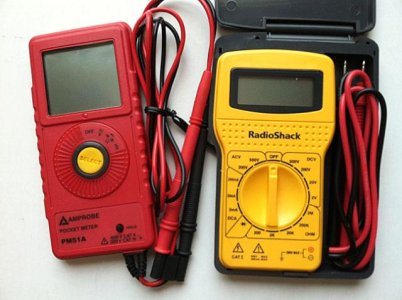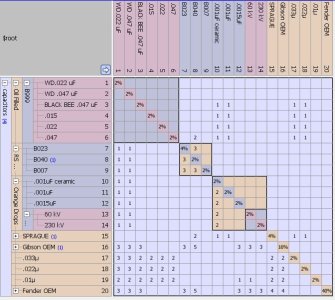Thanks a lot for all these details, and the pics. It's fun to see what kinds of experiments people are trying, and how they turn out.
What was the meter you were using for measuring capacitance?
A common problem with caps is that they will have a short, or they "bleed" current across their dielectric. In fact, I can't even find reference to any other kind of common problems that occur with the type of ceramic caps used in electric guitars, outside of the usual tolerance issues. According to this guy
http://www.aqdi.com/tonecap.htm a bleed / short in a cap is the same as running the cap in parallel with a resistor. In theory, this would decrease volume, because current is being bled out through the cap like a volume control, and it might further attenuate highs, but I don't know what happens for sure, not knowing a) the physical nature of a short, and b) not having had a shorted/bleeding cap on hand to test with. There could be other factors involved that are not immediately obvious that could potentially produce the results you're describing.




